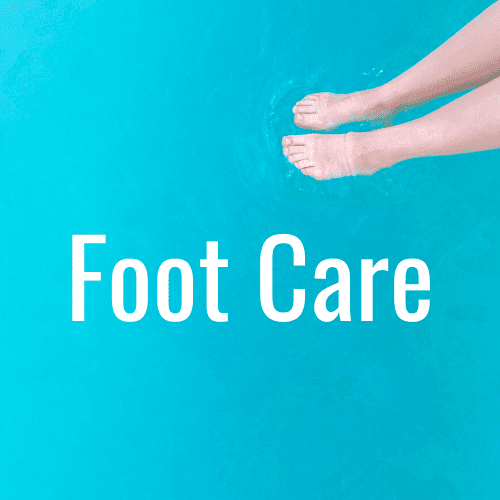Prioritizing Foot Care
Wednesday March 4, 2020

Feet are usually the last thing on our minds when we think of health and wellness. They are “the low item on the totem pole.” Our feet are almost always covered and serve their purpose with little fuss. We may take extra care when sandal weather arrives, but otherwise, they aren’t a priority in the daily routine. And this is unfortunate!
Foot care is vital to overall health and wellness and should be a priority – especially for seniors.
Over time, feet flatten and become wider. The fatty padding naturally wears down and leaves bones and joints more exposed to wear and tear. This can make individuals more vulnerable to falls. For the elderly, falls may lead to complications because their bodies are not as equipped to withstand trauma. They can’t heal as rapidly. Even simple foot injuries like blisters, corns, ingrown toenails, and calluses can impair mobility, balance, and overall function in older adults.
Here are a few tips for optimal foot care for your loved one.
- Keep feet clean. Sounds overly simple, but it’s important! Wash daily with soap and water. Dry between the toes.
- Keep feet moisturized. A good lotion helps to prevent cracks and breaks in the skin.
- Trim nails. Overgrown and ingrown toenails are painful, and foot pain increases the risk for a fall tremendously.
- Those with diabetes need to take extra care. Diabetics should trim nails straight across and avoid cutting into the corners. Diabetics can have decreased sensation in their feet, making it more difficult to feel pain. You might opt to visit a podiatrist periodically to avoid cutting nails too short. Nails that are cut too short can lead to infection and then potentially loss of limb if not caught early enough. Check feet daily for blisters, cuts, scratches, and sores.
- Ensure footwear properly fits. Ill-fitting shoes, whether too small or too large, may cause problems for your loved one. Shoes that are too small can cause blisters and cut off circulation. Shoes that are too large make movement difficult and increase the risk of falls. A rule of thumb when buying shoes: there should ½ inch between your big toe and the end of the shoe, and the shoe should be just as wide as your feet.
- Protect your feet. Bare feet may be comfy, but we encourage wearing socks and shoes as much as possible, especially while walking outside. Wear shoes that protect your feet from cold and wet weather conditions. Ensure socks are made of natural fibers like cotton or wool.
- Check circulation. As we age, circulation decreases – especially if we have diabetes, peripheral vascular disease, heart conditions, or other health concerns. Encourage your loved one to elevate his/her feet whenever possible to encourage return circulation to the heart. Monitor color and temperature of feet. This will give you helpful clues on the condition of circulation. Also, foot massages help with circulation. (This is a good opportunity to check their feet in a natural, non-threatening way.)




